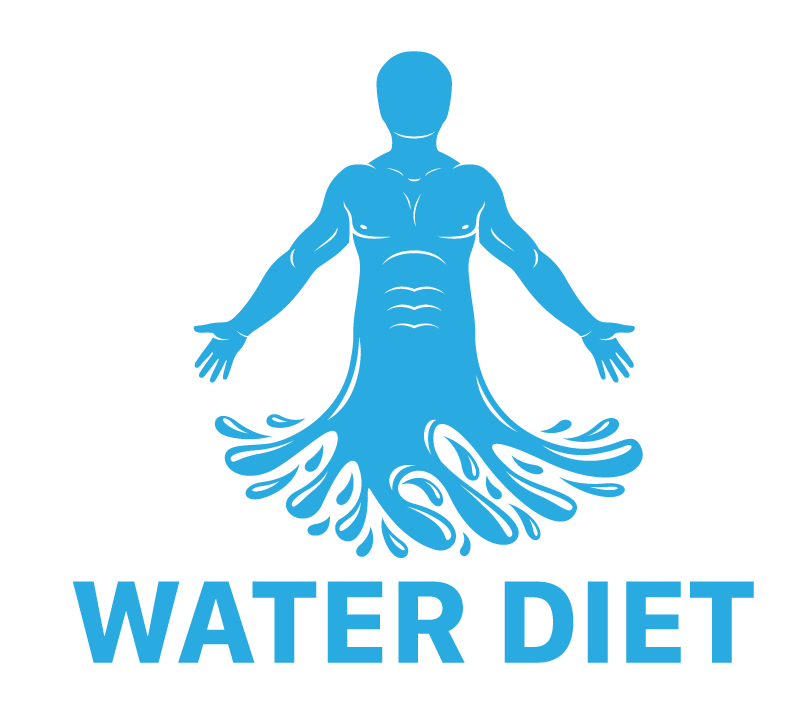Embarking on the path of water fasting and exercise demands a discerning eye for striking the right balance between reaping the health benefits and mitigating potential risks. Water fasting alone can induce significant physiological changes, such as autophagy and a transition into a catabolic state. However, introducing exercise into this equation calls for caution and an in-depth understanding of how our bodies react under these conditions. Many individuals have misconceptions regarding water fasting, particularly when it comes to muscle mass loss, oblivious to the fact that water fasting naturally increases human growth hormone (HGH) which aids in muscle recovery after the fasting period.
Intense workouts can indeed be harmful during a fast, whereas embracing gentle, low-impact exercises can enhance the body’s detoxification process, provided they are done without causing undue stress or damage to muscle tissues. Mastering the art of water fasting with safe exercise protocols is key to achieving optimal water fasting results while nurturing one’s health and wellness.
Key Takeaways
- Caution and understanding are essential when combining water fasting and exercise for ideal results.
- Despite concerns, water fasting increases HGH, promoting muscle preservation and recovery post-fast.
- Opting for mild, low-impact exercises can support detox without impeding the fasting process.
- Thorough knowledge of safe water fasting methods is crucial to prevent undue physical stress.
- Personal health parameters should guide the intensity and type of exercise during a water fast.
- Listening to your body and adjusting your routine can lead to optimal water fasting results.
Understanding Water Fasting and Its Effects on the Body
The practice of water fasting has gained traction among wellness enthusiasts not only for the benefits of weight loss, but also due to its profound physiological effects. As we explore how water fasting impacts bodily functions, it’s essential to grasp how these changes can optimize overall health and why certain physical activities pair better with fasting than others. A deeper appreciation of the body’s metabolic shifts will reveal why water fasting can complement particular types of exercise.
How Water Fasting Triggers Autophagy
One of the primary benefits of water fasting is its ability to induce autophagy, a natural regenerative process that your body undergoes to clean out damaged cells and regenerate new ones. This process supports cellular health and can combat the progression of diseases. During a period of abstaining from food, the body shifts energy utilization away from basic metabolic processes towards this cellular housekeeping.
The Shift from an Anabolic to a Catabolic State
Understanding the shifting metabolic states during water fasting is crucial. Normally, the body is in an anabolic state, utilizing nutrients from food for growth and repair. However, during fasting, the body transitions to a catabolic state. In the absence of external sources of energy, the body turns inward, breaking down its own tissues, primarily fat, for energy—prioritizing the removal of defective parts and healing.
Impact of Water Fasting on Hydration and Mineral Levels
Hydration is a cornerstone of health, especially during a fast. While the physiological effects of water fasting are beneficial, they can also strain the body’s hydration and mineral balance. Experts generally recommend a daily intake of 2-3 liters of mineral-rich water to sustain essential bodily functions and replenish electrolytes that are crucial for systemic balance during a water fast.
- Hydration: Vital for maintaining homeostasis and supporting detoxification processes during the fast.
- Electrolytes: Responsible for regulating nerve and muscle function, hydration, and blood acidity.
- Replenishment: Critical to prevent potential deficiencies and to maintain optimal functioning while fasting.
Exercise During Water Fasting: What’s Safe?
When embarking on water fasting, incorporating exercise requires careful consideration to ensure safety and effectiveness. It’s essential to understand the distinctions between exercise types and the unique physiological demands of fasting to create a regimen that supports your health rather than hinders it.
While combining water fasting and exercise can amplify detoxification and promote health, recognizing the anaerobic threshold during a fast is crucial for maintaining a safe exercise regimen.
Distinguishing Between Anaerobic and Aerobic Exercise
Anaerobic exercise typically involves high-intensity activities that rely on energy sources stored directly within the muscles, leading to quick fatigue. This form of exercise can be particularly taxing while fasting as it surpasses the anaerobic threshold, causing the body to require more oxygen than it can supply, leading to panting and a pounding heartbeat. As fasting depletes glycogen reserves, engaging in anaerobic exercises can accelerate muscle damage, contradicting the aims of a fast.
In contrast, aerobic exercise consists of low to moderate intensity activities that the body can fuel using the oxygen from your breathing. These exercises are typically sustainable for longer periods, making them better suited for those engaging in water fasting. Aerobic activities support metabolic processes that align with the body’s fasting state, promoting safe exercise during fasting without pushing the body into an anaerobic zone.
Identifying Low-Impact Exercises Suitable for Fasting
To ensure safety while enhancing the benefits of water fasting, certain low-impact exercises are recommended. These activities encourage circulation and gentle detoxification without pressing the body into the anaerobic zone. Suitable exercises include:
- Walking at a gentle pace
- Stretching routines
- Restorative yoga practices
- Light tai chi movements
Engaging in these types of exercises offers a balance that allows individuals to maintain an active lifestyle without undermining the fasting process. During a water fast, the body’s energies are redirected towards healing and detoxification; therefore, selecting exercises that align with this internal process is key to fostering well-being.
| Exercise Type | Intensity Level | Compatibility with Water Fasting | Benefits During Fasting |
|---|---|---|---|
| Walking | Low | High | Promotes circulation without high energy expenditure |
| Stretching | Low | High | Encourages flexibility and supports detoxification |
| Yoga | Low/Moderate | High | Facilitates mental focus and deepens bodily awareness |
| Tai Chi | Low | High | Enhances balance and stress reduction |
On the first day of a water fast, some gentle activity, such as a brisk walk, can be beneficial as it helps to deplete glycogen stores and accelerates entering ketosis. However, even this should be done with mindfulness towards the body’s reduced energy reserves.
Ultimately, the goal is to nurture your health and not to push your limits. By choosing the right type of exercise while fasting, you can enhance your water fasting experience safely and responsively to your body’s needs.
The Science Behind Water Fasting and Exercise
Delving into fasting science reveals intriguing insights into how the body adapts and benefits from the voluntary abstinence of food. Especially in the context of water fasting and exercise, understanding hormonal and muscular responses can arm us with the necessary knowledge to implement both practices safely and effectively. Let’s explore the relationship between fasting and metabolic alterations, particularly within the realms of human growth hormone (HGH) secretion and muscle mass preservation.
Examining the Relationship Between HGH and Muscular Health
Water fasting stands at the forefront, not only for the purpose of caloric deficit but also as a catalyst for endogenous human growth hormone production. Elevated HGH levels during fasting are instrumental in maintaining and even heightening muscle synthesis capabilities. The body seems hard-wired to protect vital muscle tissue during times of decreased food intake, endorsing the reliance on HGH for musculoskeletal resilience and regeneration post-fast. This hormonally fueled safe haven inadvertently fortifies the foundations for muscle mass preservation and subsequent growth.
Addressing Myths About Muscle Mass and Fasting
The common narrative suggests a direct correlation between fasting and muscle wasting; however, fasting science contradicts this assertion. Research indicates that water fasting can, in fact, safeguard muscle tissue more effectively than exercising in a state of nutritional deficiency. This is primarily due to the body’s inability to repair micro muscle damage without adequate protein availability. Thus, while exercising under normal circumstances prompts the body to repair and build muscle, fasting changes the playing field, and the anticipated muscle repair post-exercise does not materialize in the absence of nutrition, leading to an overall greater loss of muscle mass.
The paradigm shift in understanding how water fasting influences bodily functions, specifically in relation to muscle mass preservation and human growth hormone, is key to optimizing the integration of fasting with physical activity. Validating these biological truths can dispel fears and equip those embarking on a water fast with a strategic approach towards exercise that harmonizes with the body’s natural fasting-induced processes.
Preparing Your Body for Water Fasting and Exercise
Embarking on a journey into water fasting requires mindful preparation, and exercise during this period further amplifies the necessity for a cautious approach. Diving into such a regimen without due diligence is akin to setting sail into uncharted waters. Thorough preparation begins with understanding the nuances of your own body and its reaction to fasting and exercise. Below, we distill the wisdom necessary for preparing your body to undertake water fasting safely and effectively.

Fasting is not a feat to be taken lightly, especially when paired with physical activity. Before plunging into the depths of a water fasting regimen, consulting healthcare professionals becomes non-negotiable. This preliminary step is crucial in navigating the prospects of fasting with exercise without disrupting your health.
Assessing Your Health Status with a Healthcare Professional
The best starting point when preparing for water fasting is to seek medical advice. A healthcare professional can provide tailor-made guidance based on your health history, current health status, and any medications you may be taking. This personalized touchstone is essential in ensuring that fasting complements rather than compromises your wellbeing.
Proper Hydration: Determining the Right Intake
Hydration plays a starring role during fasting. Drinking plenty of water—around 2-3 liters per day—is not just a mere suggestion but a foundational aspect of successful fasting. The consideration is twofold: maintaining hydration and replenishing the vital minerals that your body will inevitably lose throughout the fasting process. While much emphasis is placed on avoiding food intake, equipping yourself with a hydration plan is just as critical.
Let’s consider the specifics of hydration during fasting:
- Personal Hydration Needs: Depending on factors such as weight, climate, and level of physical activity, your water needs may vary. Adjust your intake accordingly.
- Mineral Balance: Opting for mineral-rich water sources or incorporating an electrolyte supplement, with a professional’s advice, can be a prudent choice to ensure equilibrium within your body.
- Pre-fasting Hydration: Building a routine of adequate water consumption before beginning the fast can make the transition smoother.
Preparing for fasting isn’t just about clearing your schedule and your pantry; it also involves setting the stage with smaller, more frequent meals that emphasize whole foods. Instilling such practices primes your body for the fasting state and eases the process of refeeding when you choose to resume a standard diet.
Combining water fasting with an exercise regimen underscores the importance of a carefully curated plan. Your plan should focus not only on the calibration of fasting and workouts but also on the delicate balance of nutrients, hydration, and rest, critical to the symphony of health optimization.
Now, let’s clarify and outline the dietary shifts, important drinks to consider, and essential minerals that warrant attention in the days leading up to your fast:
| Pre-Fasting Focus | Guidelines | Benefits |
|---|---|---|
| Dietary Shifts | Integrate smaller, nutrient-dense meals throughout the day | Eases the transition into fasting and maintains baseline nutrient levels |
| Hydration | Gradually increase water intake to 2-3 liters per day | Ensures the body is well-hydrated before the onset of fasting |
| Minerals & Electrolytes | Include mineral-rich foods or supplements as advised by healthcare professionals | Preserves a healthy electrolyte balance necessary for cellular functions |
With careful planning, water fasting and exercise can be integrated into a powerful duo that harnesses the benefits of both practices. Yet without the critical steps of assessing health status, consulting healthcare professionals, and ensuring proper hydration, individuals may find these endeavors to be more challenging than beneficial. Consider this content a beacon as you navigate the waters of preparation, guiding you to a safe and rewarding fasting experience.
Water Fasting and Exercise for Weight Loss
Within the spectrum of weight loss strategies, the interplay between water fasting and exercise schedule garners considerable attention. The fusion of these two approaches can potentially accelerate fat loss while preserving lean muscle mass. However, navigating this confluence requires a nuanced understanding of the body’s responses and careful planning to avoid adverse health effects.
Evaluating the Benefits and Risks of Combining Both for Fat Loss
For those contemplating combining fasting with exercise, it’s vital to consider both the metabolic boost and potential pitfalls. Water fasting propels the body into ketosis, an optimal state for fat burning, whereas exercise, particularly of low-intensity, can increase the caloric deficit and hence potentiate fat loss. Yet, this must be tempered with awareness to prevent muscle catabolism and undue stress on the body.
Strategies for Maximizing Weight Loss Efforts Safely
Safe and effective water fasting entails more than the cessation of food intake; it involves judiciously timing exercise to align with energy levels and physiological states. Below is a table of strategies designed to bolster weight loss efforts while fostering safety during a water fast:
| Strategy | Description | Impact |
|---|---|---|
| Low-intensity exercise | Incorporate activities such as walking or gentle yoga. | Enhances fat burn without overstressing the body. |
| Hydration | Ensure consistent intake of water to support metabolism. | Prevents dehydration and maintains energy levels. |
| Nutrient timing | Gradually reintroduce food following a fasting plan to minimize refeeding syndrome. | Safeguards against sudden metabolic imbalances. |
| Medical supervision | Consult healthcare professionals before commencing fasting and exercise regimens. | Provides guidance tailored to individual health needs. |
By adhering to a structured water fasting and exercise schedule, individuals can capitalize on the synergistic effects of this combination for weight loss, while mitigating risks. It’s not solely about fast duration or workout intensity; it’s about crafting a holistic approach that complements the body’s natural mechanisms and preferences, ensuring health remains the paramount goal.
Best Practices for Water Fasting and Exercise
When it comes to integrating exercise within a water fasting regimen, timing and responsiveness to the body’s cues become paramount. Adhering to best practices for water fasting and exercise ensures that you obtain the benefits of both without compromising your health. It’s essential to synchronize light physical activity with different phases of fasting and to listen to your body for signals that dictate the need for nourishment or rest.
Timing Your Workouts with Fasting Phases
On Day 1 of a water fast, your body still enjoys the remnants of your last meal. Moderate exercise, like an easy jog during this phase, can be beneficial in jump-starting the ketosis process, while ensuring your energy levels remain stable. In the days that follow, prioritize low-impact exercises that align with an increasing focus on detoxification and natural healing processes.
Recognizing Signs Your Body Needs More Nourishment or Rest
Listening to your body is an indispensable component of safe fasting and exercise. Indicators such as fatigue, muscle soreness, or any form of discomfort while exercising are clear signs that your body may be in need of more nourishment or a moment of rest. It is critical to respect these signals – they represent your body’s attempt to communicate its limits and needs during the healing period of fasting.
- Starting slow: Begin fasting with gentle exercises to match your body’s decreasing caloric intake.
- Being aware: Observe how your body responds to various activities during the fast.
- Easing off: As your fast progresses, scale back intensity to prevent overexertion.
- Staying flexible: Adjust your workout plan based on how you feel each day.
- Hydration: Maintain adequate hydration, listening for cues such as thirst and dry mouth.
The intersection of water fasting and exercise doesn’t have to be intimidating. By implementing these best practices and tuning into the wisdom of your own body, you can navigate a fasting experience that is not only safe but also revitalizing for both body and mind.
Scheduling Your Water Fasting and Exercise Routine
Embarking on a water fast requires meticulous planning, particularly when integrating exercise into your regimen. A personalized fasting schedule is as unique as your fingerprint—tailored to meet your individual health goals and capabilities, while also respecting the natural energy conservation your body undergoes during a fast. Crafting a plan that accommodates the exercise intensity during fasting periods is essential for aligning with your body’s shifting energy dynamics.
Developing a Personalized Fasting and Workout Plan
Creating a personalized plan ensures that your fasting journey is not only sustainable but also conducive to your lifestyle and health requirements. It’s about striking a balance between the fasting duration, your daily routines, and the exercise intensity that your body can handle during these periods of abstention.
To start, consider your current activity levels and how you can modify these during the fasting period. If you are new to fasting or exercise, begin slowly and increase the intensity of your workouts gradually. Those with a history of regular exercise may opt for light to moderate activities that do not excessively tax the body. Your plan should also leave room for adjustments as you progress through the fasting state.
Adjusting Exercise Intensity Based on Fasting Duration
As your body enters different stages of fasting, it is imperative to modify the exercise intensity accordingly. In the early days, you may be able to maintain a level closer to your normal routine, provided it is not overly strenuous. However, as you delve deeper into the fast, gentler forms of movement such as yoga, tai chi, or leisurely walks become more appropriate.
Your body’s response is your most reliable guide throughout this process. Below is a table that outlines how to adjust your exercise intensity based on the fasting duration.
| Fasting Duration | Recommended Exercise Intensity | Types of Exercise | Additional Recommendations |
|---|---|---|---|
| Day 1-2 | Moderate | Aerobic exercises like jogging or biking | Keep sessions shorter than usual |
| Day 3-5 | Low to Moderate | Low-impact activities like walking or pilates | Monitor energy levels closely |
| Day 6+ | Low | Gentle exercises such as stretching and restorative yoga | Focus on relaxation and recovery |
Remember, the key to a successful personalized fasting schedule lies in careful planning and adaptability. Fasting is not about pushing through but rather listening to—and honoring—what your body is communicating, allowing you to reap the benefits while fostering resilience and health.
Water Fasting and Exercise: Benefits for Health and Wellness
Exploring the intersection of water fasting and exercise unveils significant opportunities to enhance health and wellness. The strategic pairing of these practices is not merely a trend but is grounded in physiological benefits that extend beyond the realm of weight loss. Engaging in mindful low-impact exercises during a water fast can yield improvements in metabolic health, contribute to increased longevity, and foster mental clarity.
Improvements in Metabolic Health and Longevity
Water fasting, when combined with appropriate exercise, can lead to substantive improvements in metabolic health. This practice is known to activate pathways that improve insulin sensitivity, reduce inflammation, and encourage fat metabolism. The potential for enhancing longevity rests in the ability of fasting to trigger cellular autophagy, which is the body’s way of cleaning out damaged cells to rejuvenate newer, healthier cells—a process essential for maintaining the body’s vitality.
Engaging in gentle exercise during water fasting has the potential to extend the health benefits further, encouraging the body to retain a heightened state of metabolic efficiency even in the absence of food.
Promoting Physical and Mental Clarity
The clarity of mind is an often-reported benefit associated with fasting. Mental clarity during water fasting and exercise is not an abstract concept; it’s backed by the physiological reduction of inflammation and the balance of hormones affecting the brain’s cognitive functions. Physical clarity, on the other hand, refers to the body’s ability to fine-tune its internal processes, achieving a state of detoxification and renewal that can elevate overall well-being.
While the advantages of combining water fasting and exercise for health and wellness are extensive, it is important to tailor these practices to individual health needs and circumstances. Professional medical advice should always guide the fasting process, particularly when exercise is a part of the regimen, to ensure that these practices are safely implemented.

Notably, the metabolic health benefits derived from water fasting and exercise have made them a subject of growing interest within health circles. To harness these benefits effectively, it is imperative to introduce exercise in a moderate and controlled manner during fasting.
In conclusion, integrating water fasting with exercise requires an informed and measured approach. With an emphasis on low-impact, stress-reducing physical activity, individuals can enjoy clear improvements to their physical health and mental acuity, setting a path toward a healthier, more invigorated self.
Refeeding After Water Fasting: Incorporating Exercise
When you conclude a water fast, the transition back to eating, also known as refeeding, is a delicate stage that requires as much care as the fast itself. Safely reintroducing nutrients and gradually restarting physical activities play pivotal roles in maintaining the benefits achieved through fasting while minimizing the risk of refeeding syndrome—a potentially dangerous condition. By adhering to post-fast guidelines, you can move toward restoring energy levels and returning to a healthful exercise routine.
Guidelines for Safe Post-fast Nutritional Intake
As you emerge from a period of abstention, the body’s refeeding phase must start with small steps. The initial focus is on foods that replenish electrolytes and contain moderate levels of protein to support your exercise routine while preventing metabolic shock. Strategic nutritional planning is integral to fortify the body and prepare it for resuming activity.
- Begin with liquid nutrition like broths and diluted juices to introduce easily digestible nutrients.
- Progress to soft foods rich in vitamins and minerals, such as bananas and avocados, which also help restore electrolyte balance.
- Increase portion sizes slowly and introduce a broader range of macronutrients over several days.
- Stay lower on the glycemic index initially to avoid peaks in blood sugar levels, which can be disruptive after fasting.
- Continue consultation with healthcare professionals for ongoing support and personalized advice.
How to Resume Exercise After Fasting to Avoid Refeeding Syndrome
Returning to physical activity post-fast should be as cautious and gradual as nutritional reintegration. The right approach to exercise can help maximize the benefits of water fasting and support a healthy refeeding process without the dangers of refeeding syndrome. The key is to listen intently to your body’s feedback and adjust your activity level correspondingly.
- Start with low-impact exercises such as walking or light stretching that won’t overly strain the recovering system.
- Introduce a wider range of movements and moderate-intensity workouts as your dietary intake increases and energy levels stabilize.
- Avoid high-intensity interval training (HIIT) or heavy weightlifting until you are consuming sufficient calories and nutrients.
- Monitor for signs of fatigue or muscle weakness, indicating the need to scale back exercise or caloric intake.
- Maintain clear communication with healthcare providers to adjust exercise according to individual recovery rates.
Resuming your exercise regimen after water fasting is a process that should be synchronized with your body’s nutritional recovery. By following these post-fast exercise guidelines, you can ensure a transition that supports muscle maintenance, energy repletion, and holistic wellness, effectively avoiding refeeding syndrome.
Personal Experiences and Testimonials on Water Fasting and Exercise
The synergy of water fasting and exercise, when navigated correctly, has the potential to transform lifestyles and wellness journeys. By diving into the shared experiences from those who’ve ventured on this path, we uncover a wealth of knowledge and tips for successful water fasting and exercise.
Success Stories and the Role of Community Support
Community support stands as a lighthouse for many navigating the challenging but rewarding waters of water fasting combined with exercise. Water fasting success stories often highlight the integral role that support networks play in maintaining motivation and accountability. From online forums to local wellness groups, these communities provide encouragement, share strategies for overcoming fasting challenges, and celebrate every milestone achieved together.
“The community I found through water fasting kept me on track, sharing their own stories and insights that were instrumental in my success,” shares a member from a popular fasting forum.
These shared experiences frequently mention the importance of setting achievable goals, listening to one’s own body, and incorporating restful and mindful approaches to stay balanced throughout the fasting period.
Learning from Challenges and How to Overcome Them
While success stories can be incredibly inspiring, learning from the challenges others have faced is equally important. Overcoming fasting challenges often involves adapting workouts to the body’s lowered energy levels, staying well-hydrated, and ensuring that one’s approach to fasting and exercise is sustainable in the long run.
Anecdotes from successful fasters emphasize that starting slow, respecting the body’s responses, and gradually building up intensity can lead to more sustained results. Also, one cannot underestimate the role of proper hydration when participating in physical activities during a fast.
| Challenge | Common Solution | Benefit |
|---|---|---|
| Lack of energy during workouts | Adjusting exercise intensity and duration | Allows the body to adapt without strain |
| Navigating hunger pangs | Engaging in light, distracting activities | Redirects focus and helps manage appetite |
| Maintaining motivation | Joining a fasting community for support | Encourages persistence and shared learning |
Taking these lessons to heart, anyone looking to embark on their own water fasting experience can formulate a plan enriched by the collective wisdom of those who’ve already charted these waters.
Conclusion
Embarking on a water fasting journey introduces unique alterations to bodily processes, magnifying the importance of hydration during water fasting and exercise. As we summarize key takeaways for a safe fasting experience combined with physical activity, we recognize that understanding these physiological changes is vital. Achieving weight loss, promoting health, and enhancing wellness through water fasting requires an intertwining of scientific awareness and an acute sensitivity to one’s health status. Hydration remains paramount, serving as the lynchpin of successful fasting. Coupled with meticulously timed exercise and conscientiously managed exercise intensity, these practices can yield transformative results.
Summarizing Key Takeaways for Safe Water Fasting and Exercise
Foremost among the considerations for safe water fasting is recognizing that the journey is deeply personal and varies from individual to individual. The body’s response to fasting and subsequent introduction of exercise ought to be monitored closely, acknowledging the limits and signs it provides. Equally imperative is the role of hydration, a crucial aspect that underpins the efficacy and safety of combining fasting with exercise. Strategically integrating fasting and exercise necessitates attention to timing and intensity, ensuring the body is nourished through movement without overextension.
Next Steps for Integrating Fasting and Exercise into Your Lifestyle
For those contemplating a water fasting regimen that includes exercise, the path forward starts with preparation. Engaging with healthcare professionals paves the way for personalized advice and aids in sculpting a fasting and exercise framework that aligns with your lifestyle, objectives, and health metrics. It’s about more than adopting trends—it’s about infusing one’s life with a practice that is reflective of care, understanding, and respect for one’s bodily needs. Establishing routines that honor the importance of hydration during water fasting and exercise, and embracing balanced nourishment with mindful physical activity, are foundational steps towards a sustained and meaningful merging of fasting and exercise within your wellness repertoire.
FAQ
What are the benefits of water fasting and exercise?
Water fasting combined with exercise can lead to weight loss, improved metabolic health, detoxification, enhanced mental clarity, and the possibility of improved longevity. Exercise can help deplete glycogen stores and expedite the transition into ketosis during fasting.
How does water fasting affect the body?
Water fasting triggers autophagy, allowing the body to cleanse and recycle old cell parts. It also shifts the body from an anabolic state, which builds up resources, to a catabolic state, which utilizes existing resources for repair and cleansing. However, it can also raise concerns about hydration and mineral balance.
What types of exercise are safe during water fasting?
Low-impact and aerobic exercises like gentle walking, stretching, or yoga are safe during water fasting. These exercises support the body’s detoxification processes without causing undue stress or muscle damage. High-intensity and anaerobic exercises should be avoided.
How does water fasting impact muscle mass?
Water fasting can increase human growth hormone (HGH) levels, which helps protect muscle mass and facilitate muscle recovery post-fast. Contrary to myths, muscle preservation is generally better during fasting compared to performing intense workouts in a fasted state, which can lead to more muscle loss.
How should I prepare my body for water fasting and exercise?
Preparing for water fasting with exercise includes assessing your health with a professional, ensuring proper hydration, and potentially transitioning your diet to smaller, whole food-based meals. This preparation helps ease both the fasting and the post-fasting refeeding process.
Can water fasting and exercise be used for weight loss safely?
Yes, when approached strategically under medical supervision, water fasting and exercise can be combined for safe weight loss. The focus should be on low-intensity workouts during fasting, conserving energy, and avoiding muscle damage. A gradual and monitored refeeding is also crucial post-fast.
What are best practices for combining water fasting and exercise?
Best practices include timing mild workouts to coincide with fasting periods, choosing low-impact exercises, staying hydrated, and listening to your body’s signals for nourishment or rest. Knowing when to slow down or stop is vital for safety.
How do I schedule my water fasting and exercise routine?
Develop a personalized plan that tailors the duration of fasting and the type of workouts to your needs and health status. As you progress in the fast, reduce the intensity of your exercises and focus on activities that encourage detox without overstressing the body.
What are some broader health benefits of water fasting and exercise?
Beyond weight loss, water fasting and exercise may enhance metabolic health, reduce inflammation, support hormone balance, and improve mental clarity. However, it is important to approach this combination cautiously to ensure it is safe based on individual health conditions.
How do I manage refeeding and exercise after water fasting?
Post-fast, it’s recommended to reintroduce foods slowly to avoid refeeding syndrome, focusing on electrolyte-rich foods and moderate protein intake. Exercise should be resumed gradually, increasing intensity as your body recovers nutritionally.
How important is community support during water fasting and exercise?
Community support can be incredibly beneficial during water fasting and exercise. Success stories often highlight the motivation and insights gained from shared experiences and challenges, underscoring the value of learning from others.
How crucial is hydration during water fasting combined with exercise?
Hydration is a critical element when combining water fasting with exercise. It’s important to drink an adequate amount of mineralized water (typically 2-3 liters per day) to maintain mineral balance and avoid dehydration, which can be heightened during fasting and physical activity.




